Ashok Kumar
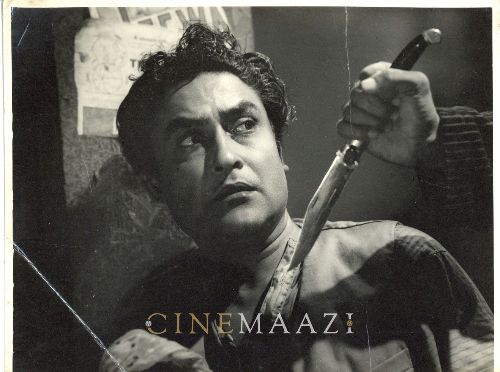
Subscribe to read full article
This section is for paid subscribers only. Our subscription is only $37/- for one full year.
You get unlimited access to all paid section and features on the website with this subscription.
Not ready for a full subscription?
You can access this article for $2 , and have it saved to your account for one year.
- Real Name: Kumudlal Ganguly
- Born: 13 October 1911 (Bhagalpur, Bihar (British India))
- Died: 10 December 2001 (Bombay)
- Primary Cinema: Hindi
- Spouse: Shobha Devi
- Children: Preeti Ganguly , Aroop Ganguly, Bharati Patel, Rupa Verma
Ashok Kumar better known as Dadamoni in the film fraternity was born in Bhagalpur, Bihar. He did his schooling from Khandwa and graduation from Jabalpur and went to Calcutta (now Kolkata) to pursue law. He was least inclined to practice law. He was very much interested in seeing movies. The two films Chandidas (1927) and Puran Bhagat (1928) inspired him to become a director but contrary to his aspirations he turned out to become an accomplished actor. Those days heroes and heroines were looked down upon as pimps and call girls. Overpowered by the idea of becoming a director, he used Rs. 35, his examination fee to be paid at the law college, to buy a ticket and went to visit his brother-in-law Sashadhar Mukherjee, a producer and sound engineer at the theatre. He met Himanshu Rai and was employed as an assistant cameraman on a monthly salary rose to Rs. 250 a month. Eight months later, Bombay Talkies was all set to launch the film Jeevan Naiya (1936) starring Devika Rani and Najam-ul-Hussain. Devika Rani eloped with the hero. She was discovered and pardoned but Najam-ul-Hussain was replaced by Ashok Kumar. This was an awesome experience for him. But with the passage of time, Ashok gathered confidence. Dada Muni’s first shot was a disaster of sorts. He was supposed to jump on the villain’s back on the count of 10 but he jumped earlier and the villain broke a leg. He was hospitalized and the shooting of the film was stalled for nearly four months. In his second movie, Achut Kanya (1936) he enacted the role of a Brahmin boy in love with an untouchable girl. This film was a great success and established him as an actor.
After this, he did many films with Bombay Talkies, till 1943. In his early Bombay Talkies films, Ashok Kumar played the good clean-cut hero in a series of romantic films. He acted in Izzat(1937), Prem Kahani (1937), Savitri (1937), Nirmala (1938), Vachan (1938), Kangan (1939), Bandhan (1940), Anjan (1941), Jhoola (1941), Naya Sansar (1941). And then came his biggest hit, Kismet (1943), whose record was shattered only by Sholay (1975). His role as perhaps the Indian Screen’s first cigarette smoking anti-hero with the heart of gold remains his most famous screen role and the film ran for over three years in a theatre in Kolkata.
Famous Urdu writer Sadat Hasan Manto writes about the initial days of Ashok Kumar in Film Industry:
When Ashok Kumar joined the silver screen his salary was only Rs. 75 per month. But when he began to earn Rs. 250 per month he hot scared. He told me, ‘Look at my strange situation! When I received this money from the accountant my hands shook with fear. I didn’t know where to keep the money! My house was too small. There was only one cot and two chairs in it and jungle on all sides. If any robber should come in the night…I was terrified by this thought. I hid the money beneath the carpet under the cot. I had terrible nightmares throughout the night. The first thing I did the next day was to deposit the money in the post office.
He was in a way the first superstar with audience thronging the halls only for him. In the year 1943, along with Shashadhar Mukherjee, Gyan Mukherjee and Rai Bahadur Chunilal he left Bombay Talkies to set up a rival film company, Filmistan. He did return to Bombay Talkies as production chief later and starred in one of their biggest ever hits, Mahal (1949), but the days of the studio were numbered.
His later films were Najma (1943), Angoothi (1944), Chal Chal Re Naujawan (1944), Kiran (1944), Begum (1945), Humayun (1945), Eight Days (1946), Saajan (1947), Chandrashekar (1948), Padmini (1948). His winning streak continued with Mahal in 1949, which he also produced under the banner of Bombay Talkies. He also went on to produce films like Majboor (1948), Mashaal (1950), Ziddi (1948) etc. Ashok Kumar initiated a more natural style of acting compared to the prevailing style that followed theatrical trends. Devika Rani and Himanshu Rai took pains to groom him. They insisted that Ashok should watch English films and arranged tickets for him. He watched so many stars like Humphrey Bogart and imbibed their style. He absorbed and learnt a lot from the Hollywood films of the day and learnt that acting was not merely standing and saying one’s dialogue but reacting as well. According to Film Director Tapan Sinha… “He is the man who showed that film acting is something else. He began to speak and to behave normally.”
The 1950s was Ashok Kumar score in a series of crime films with his trademark cigarette-Sangram (1950), Inspector (1956), Howrah Bridge (1958), Night Club (1958) to name some. This, balanced with, the sensitive Naubahar (1952), Parineeta (1953). He had a small tiff with Bimal Roy during the production of Parineeta (1953), when the director, Bimal Roy, supposedly conned him and made Do Bigha Zamin (1953) with his money. The misunderstanding ended with their teaming together in Bandini made in 1963. His characterization of the revolutionary Bikash Ghosh in Bandini won him unanimous applause. Dadamoni made the transformation from a superstar star a character artist effortlessly. Ek Hi Rasta (1956) and the rioyous Chalti Ka Naam Gaadi (1958) ensured that he was the one actor who effortlessly withstood the famous trio of the 1950s-Dev Anand, Dilip Kumar and Raj Kapoor and more than held his own in the films they did together-Badbaan (1954), Deedar (1951) and Bewafaa (1952) respectively. His other notable films in 50s are Mahal (1950), Aadhi Raat (1950), Khiladi(1950), Samandar (1950), Mashaal (1950), Nishana (1951), Afsana (1952), Betaab(1952),Raag Rang (1952), Saloni (9152), Jal Pari(1952), Kaafila (1952), Poonam (1952), Tamasha (1953), Shamsher (1953), Lakeeren (1954), Naaz (1954), Samaj (1955), Bandish (1955), Sardar (1956), Bhai Bhai (1956), Shatranj (1957), Bandi (1957), Ek Saal (1957), Ustad (1957), Talash (1957), Mr. X (1958), Farishta (1958), Karigar (1958), Raagini (1958), Light House (1958), Sitaron Se Aage (1958), Savera (1959), Daaka(1959), Bedard Zamana Kya Jane (1959), Kangan (1959), Naach Ghar (1959), Nai Rahen (1959).
He and Devika Rani did a string of films together-Izzat (1937), Savitri (1937), Nirmala (1938) among others but she was the bigger star and chief attraction in all those films. It was with his trio of hits opposite Leela Chitnis- Kangan(1939), Bandhan (1940) and Jhoola (1941) that Ashok Kumar really came into his own. Going with the trend he sang his own songs and some of them like Main Ban ki Chidiya, Chal Chalre Naujawaan and Na Jaane Kidhar Aaj, Meri nao chali re were extremely popular.
His success continued with strong performances in Aarti (1962), Gumrah (1963) and an absolutely flawless one in Bandini (1963), matching Nutan’s brilliant performance scene for scene. In the late 1960s after Mamta (1966) and Hatey Bazarey (1967), he effortlessly settled down to playing character roles. His role as a lovable old man in Aashirwad (1968) is noteworthy. He acted in mamy films in 60s like Santan (1960),Aanchal (1960), Kala Aadmi (1960), Kanoon (1960), Kalpana, (1960), Masoom (old) (1961), Dark Street(1961), Flat No. 9 (1961), Warrant (1962), Bezubaan (1962), Hong Kong (1962), Isi Ka Naam Duniya Hai (1962), Naqli Nawab (1962), Mehandi Lagi Mere Hath (1962), Private Secretary (1962),Rakhi (1962), Ghar Kee Shobha (1962), Burma Road (1963), Aaj Aur Kal (1963), Grahasthi (1963), Ustadon Ke Ustad (1963), Mere Mehboob (1963), Meri Surat Teri Ankhen (1963), Yeh Raaste Hain Pyar Ke(1964), Benazir (1964),Dooj Ka Chand (1964), Chitralekha (1964), Fariyaad (1964), Phoolon Ki Sej (1964), Pooja Ke Phool (1965), Aakash Deep (1965), Chand Aur Suraj (1965), Bheegi Raat (1965), Naya Kanoon (1965), Oonche Log (1965), Bahu Beti (1965), Aadhi Raat Ke Baad (1966), Daadi Maa (1966), Afsana (1966), Toofan Main Pyar Kahan (1966), Yeh Zindagi Kitni Haseen Hai (1967), Nai Roshni (1967), Jewel Thief (1967), Mehrban (1967), Bahu Begum (1968), Ashirwad (1968), Sadhu Aur Shaitna (1969), Aradhana (1969), Bhai Bahen (1969), Do Bhai(1969), Inteqam (1969), Aansoo Ban Gaye Phool (1969), Satyakam (1969), Paisa Ya Pyar (1969).
As a character artiste, Ashok Kumar took on all sorts of characters-the villain in Jewel Thief (1967), the sympathetic father in Mili (1975), (where his songs proceeded the rap phenomenon by decades!) and Choti Si Baat (1975),- the conman in Victoria No. 203 (1972), the rapist in Jawaab (1970). His other films in 70s are Pyar Ka Sapna (1970), Maa Aur Mamta (1970), Jawab (1970), Safar (1970), Sharafat (1970), Purab Aur PaschimPurab Aur Paschim (1971), Door Ka Raahi (1971), Kangan (1971), Ganga Tera Pani Amrit (1971),Guddi (1971), Hum Tum Aur Who (1971), Adhikar (1971), Naya Zamana (1971), Umeed (1971), Pakeezah (1972), Anuraag (1972), Dil Daulat Duniya (1972), Rakhi Aur Hathkadi (1972), Sazaa (1972), Victoria No.203 (1972),Zindagi Zindagi(1972), Zameen Aasman (1973), Do Phool (1973), Dhund(1973), Taxi Driver , (1973), Hifazat (1973), Badaa Kabutar (1974), Dulhan (1974), Do Aankhen (1974), Khoon Ki Keemat (1974), Ujala Hi Ujala (1974), Prem Nagar (1974), Paise Ki Gudiya (1974), Badti Ka Naam Dadhi (1975), Chhoti Si Baat (1975), Dafa 302 (1975), Chori Mera Kaam (1975), Ek Mahal ho Sapnon Ka(1975), Uljhan (1975), Mili (1975), Akraman (1976),Arjun Pandit (1976), Bhanwar (1976), Ek Se Badh Ker Ek (1976), Harfan Maula(1976), Rangila Ratan (1976), Mazdoor Zindabad (1976), Shankar Dada (1976), Barood (1977), Anand Ashram (1977), Anurodh (1977), Chala Murai Hero Banne (1977), Dream Girl (1977), Khatta Meetha (1977), Heera Aur Patthar (1977), Dil Aur Patthar (1977), Jadu Tona (1977), Mastan Dada (1977), Safed Jhooth (1978), Anmol Tasveer (1978), Anapadh (1978), Apna Khoon (1978), Do Musafir (1978), Chor Ke Ghar Chor (1978), Dil Aur Deewar (1978), Phool Khile Hain Gulshan Gulshan (1978), Tumhare Liye (1978), Premi Gangaram (1979), Guru Ho Ja Shuru (1979), Salaam Memsaab (1979), Janta Hawaldar (1979), Prayashchit (1979). He was by now lovingly called Dadmoni by one and all.
In 80s as the henpecked head of the family in Khubsurat (19800 he went on to act in films Bagula Bhagat(1980), Aakhri Insaaf (1980), Khwab (1980), Aap Ke Deewane (1980), Judaai (1980), Nazrana Pyar Ka (1980), Sau Din Saas Ke (1980), Takkar (1980), Saajan Mere Mein Saajan Ki (1980), Chaltika Naam Zindagi (1981), Man Gaye Ustad (1981), Jail Yatra (1981), Jyoti (1981), Mehfil (1981),Yeh Kaisa Nashaa Hai (1982), Anokha Bandhan (1982), Heeron Ka Chor (1982), Dial 100 (1982), Patthar Ki Lakeer (1982), Mehndi Rang Layegi (1982), Shakti (1982), Sambandh (1982), Shaukeen (1982), Awam (1983), Mahaan (1983), Pasand Apni Apni (1983), Love In Goa (1984), Duniya (1984), Farishta , (1984), Raja Aur RanaRaja Aur Rana (1984), Akalmand(1985), Bhago Bhoot Aaya(1985), Durga (1985), Ek Daku Shaher Mein (1985), Farz Ki Keemat (1985), Grahasthi (1985), Phir Aaye Barsat(1985), Tawaif(1986), Dahleez(1986), Inteqam Ki Aag (1986), Ram Tera Desh (1986), Amma (1986), Shatru (1986), Pyar kiya Hai Pyar Karenge (1986), Awaam (1987), Mr. India (1987), Hifazat (1989), Clerk (1989). In the 1980s, Ashok Kumar cut down his work and apart from films, was seen occasionally on Television anchoring the vastly popular soap Hum Log or playing the title role in Bahadur Shah Zafar.
However, by the mid-1990s with age ill-health he cut down on all work. His films in the 90s are Dana Pani (1991), Maut Ki Saza(1992), Humla (1991), Beqabu (1996) and perhaps his last was Return of Jewel Thief in 1997.
Besides acting, Ashok Kumar was a fine painter and also an active practitioner of homoeopathy. Since his wife Shobha’s death in 1987, he lived alone in his bungalow in Chembur. Suffering from severe asthma, he was confined to his home most of the time but made a rare appearance at some Film Award Ceremony where he was felicitated. Dadamoni passed away in Mumbai on December 10, 2001 due to cardiac arrest.
Over the years, some unforgettable films have also been made. The industry has produced talent in every field of filmmaking that will rank among the very best. One hero, who started his career more than 50 years ago and who never once, gave a less than excellent performance is Ashok Kumar. Over the years his cumulative audience would easily exceed a few billion. He is known as the evergreen hero.
Ashok Kumar’s career spectrum reads like a veritable classification of the milestones in Indian cinema. From the best socials (Achut Kanya, Kangan, Bandhan, Jhoota, Kanoon) to the best romances (Bandini, Mahal, Gumrah) and the best character roles (Mere Mahboob, Bahu Begum Aashirwad, Mili, Khubsoorat), the actor built a benchmark with whatever he undertook. Till today, the 1940s Kismet stands out as a landmark for more than one reason: for creating the first archetype of the anti-hero with Ashok Kumar’s perfect portrayal of a thief who loses his heart to a handicapped girl; for striking the first “Quit India’ note in popular cinema with chartbuster Doorhato aye duniawalon, Hindustan hamarahai and for becoming the first blockbuster of Bollywood with a record run of almost two years. But more than his histrionics on the screen and his vast career span which stretches from pre-Independence India to turn-of-the-century India (his last film was the 1990’s starrer Return of the Jewel Thief), Ashok Kumar lived larger than life as an intrinsic part of Indian psyche. Be it blowing enigmatic smoke rings in Jewel Thief, standing tall before Madhubala‘s seductive charms in Aiye Mehrban, playing a fun-loving father in Khubsurat or beaming the tube with a characteristic smile in a popular soap, Dadamoni remains an undeniable essence of Hum Log: the quintessential Indian who is multi-dimensional in the appeal that transcends all boundaries.
Awards & Honours:
Ashok Kumar was the chairman of the jury for National Awards in 1982 and in 1990. He was conferred honorary D. Litt. For his achievements in the field of cinema by the Rabindra Bharati University in 1997. He was also the recipient of the Sangeet Natak Academy Award, Padmashree and Padmabhushan awards. He received the Filmfare Award for Lifetime Achievement in 1995.
This is a reproduction of the essay Perennial Source of Inspiration: Ashok Kumar from the book Great Masters of Indian Cinema : The Dadasaheb Phalke Award Winner by D P Mishra
-
Filmography (260)
SortRole
-
Beqabu 1996
-
Maut Ki Saza 1992
-

Humlaa 1991
-

Begunaah 1991
-
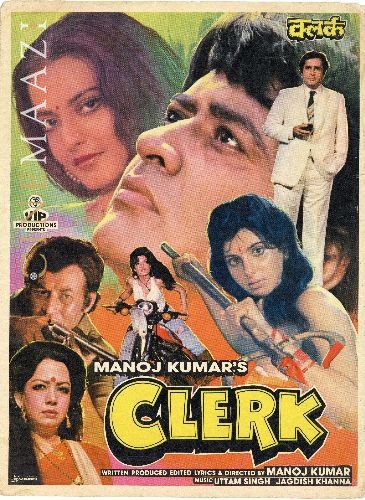
Clerk 1989
-

Majboor 1989
-
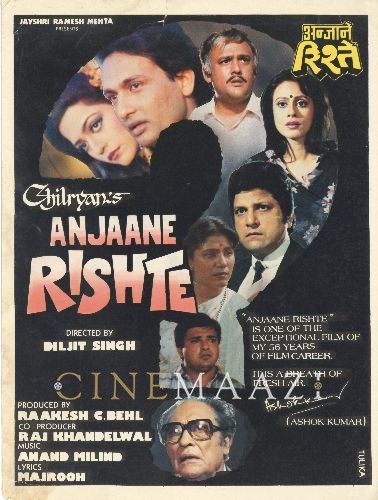
Anjaane Rishte 1989
-
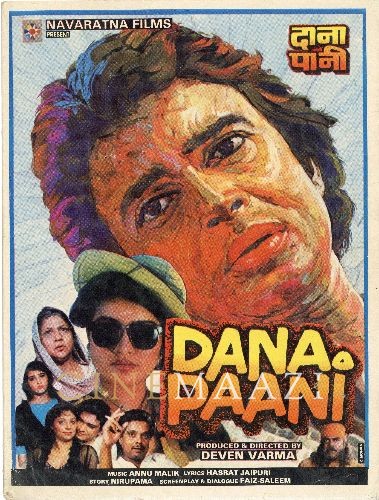
Dana Paani 1989
-

Faisla 1988
-

Intaqaam 1988
-
Inteqam 1988






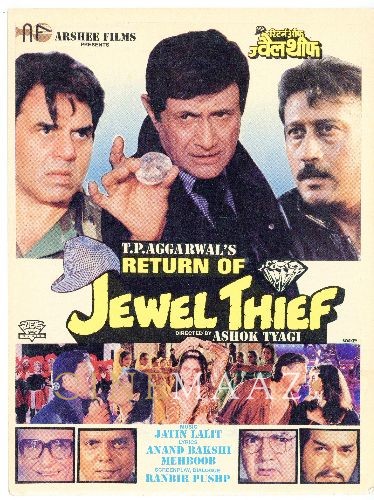

.jpg)



